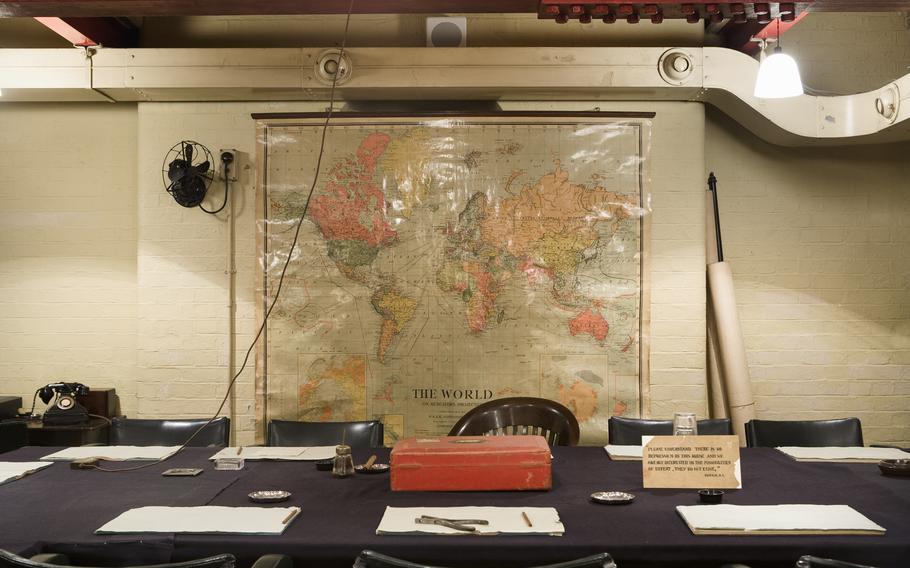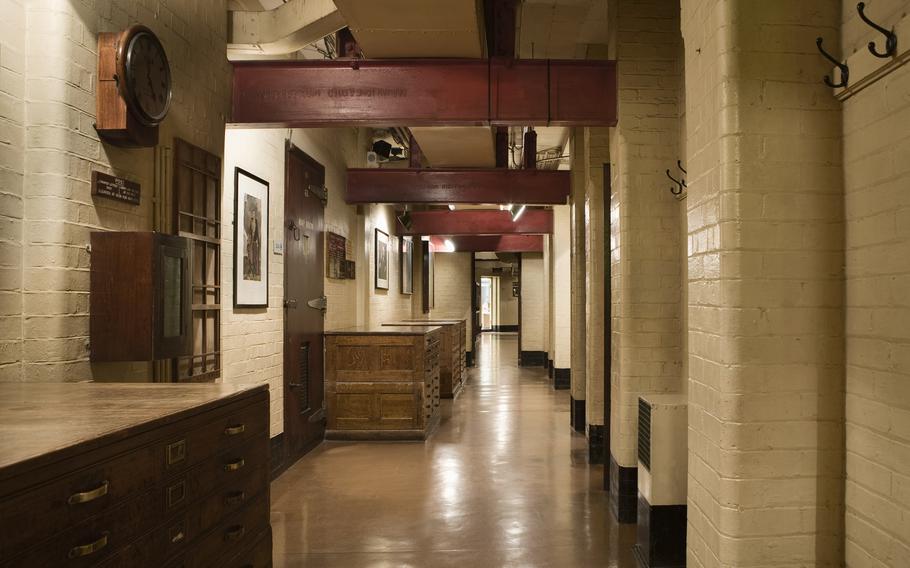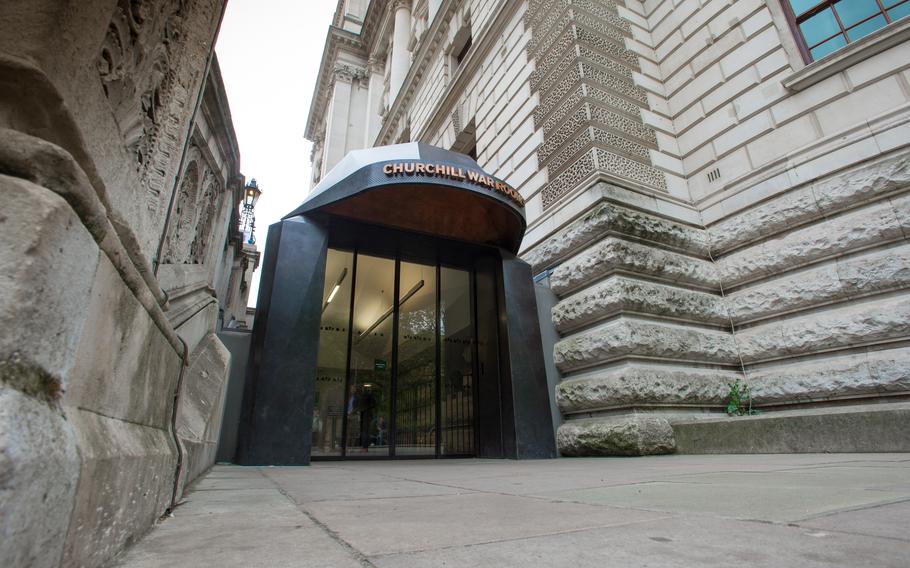
The Cabinet room at the Churchill War Rooms in London provided seating for the heads of the British army, navy and air force as well as others reporting to Prime Minister Winston Churchill. (Richard Ash/Imperial War Museum)
Few historic sites are as well-preserved as London’s Churchill War Rooms, which have benefited from their location in a fortified basement that housed a British government command center throughout World War II.
A colleague and I recently took an audio tour of the spots where famed prime minister Winston Churchill and his military leadership had directed the defiant defense against Nazi invasion. The self-guided tour allowed us to move at our own pace and soak up the history.
Located beneath the streets of Westminster, the Churchill War Rooms are a branch of Britain’s sprawling Imperial War Museum.

A corridor at the Churchill War Rooms in London allows patrons to travel between exhibits. The museum offers various ways to experience the former nerve center of British resistance to the Nazis. (Richard Ash/Imperial War Museum)
We spent a little over an hour covering the 17 sections, though history buffs interested in the details and speaking with the knowledgeable staff members along the way could certainly be there longer. The feature-rich re-creations captured the wartime intensity that once pulsed throughout the place.
During our tour stop in the war Cabinet exhibits and others, we heard about how decisions were made and listened to anecdotes about the living quarters of the British command.
This area also contains the trans-Atlantic telephone room, which enabled Churchill to speak securely with President Franklin Roosevelt in Washington. Visitors aren’t allowed to enter, but it is interesting just for the chance to see what even the command could not.
From there, we got our first look at the Churchill Museum, where we learned that the location was referred to as a “fortified basement” instead of a bunker because its fortification was never tested by actual bombs.
Churchill said that he wished the Nazi bombs had landed closer, giving him a chance to see how the protection held up amid the blasts.
About halfway through the tour, we saw a cafe, which is stocked with a variety of sandwiches and coffee selections. We then headed toward an area with wax figures acting out how the British command operated from the space.
The switchboard room shows women outfitted with modified gas masks working tirelessly during the Blitz. They stayed underground day and night, sleeping between shifts in a sub-basement.
They dubbed the switchboard room the “dungeon galleries” because the only sound was the clacking of typewriters.
At the end of the tour is the famous map room, where Churchill and military commanders directed the war effort.
It is filled from top to bottom with artifacts, which include multicolored phones that light up rather than ring so as not to produce sound.
Wall-to-wall maps chart in detail the advance of the German forces in the Soviet Union in 1941 to 1942 and their retreat in the years that followed.
I was surprised by the amount of detail and effort put into the preservation of such an important location. History was shaped in those rooms, and the fullness of the sightseeing experience made me feel like I was a part of the journey.

The Churchill War Rooms entrance is across the street from St. James Park in London. The Westminster site is near major landmarks like Big Ben and parliament. (Richard Ash/Imperial War Museum)
On the QT
Address: Clive Steps, King Charles Street, London
Hours: 9:30 a.m.-6 p.m. daily; last entry 5 p.m.
Cost: adults, 32 pounds; children 5 to 15, 16 pounds; students, disabled and those 65 and over, 28.80 pounds
Information: +44 20 7416 5000, www.iwm.org.uk/visits/churchill-war-rooms